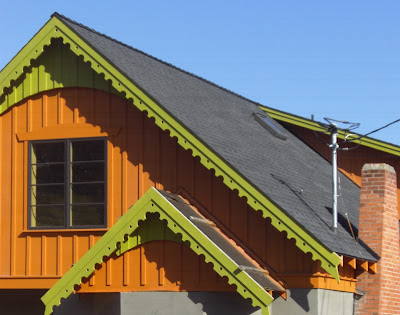Deciding what color to paint a building can be one of the most difficult decisions in any restoration effort. First of all color is something that everyone has an opinion about (personally, I am not a fan of blue) and it is something that tends to disregard any professional training (I don't care how many graduate degrees you have, I just don't like blue). Couple that with the standard approach of painting a building based on a sample that is three inches square, people's general trouble of thinking spatially, and an always underlying fear of really making a mistake, and you have a situation almost guaranteed to induce white knuckles and closely cropped nails.
Is there a "right" color for a particular architectural style or building? Generally not, at least in my opinion. Are there clearly "wrong" colors for a particular architectural style or building? You bet. No matter how well a restoration is designed and constructed, paint it purple (or dayglo Orange) and you have failed. It's just a fact of life. But if somebody is reasonable, and of course most people are, it's pretty hard to really wreck a project with paint. I swear though, that is sure appears some people try. But even the worst decision is only a cover coat or two away from correction.
Some cities, and some review boards, get all twitchy about paint color, to the point where some historic commissions have been dubbed "the paint police" by detractors. That overly controlling approach is probably counter-productive. But there's always the bad apple that spoils the basket, and nobody wants to have their neighborhood graced with a Spite Purple house with Upchuck Orange trim either. There is a reason why most people paint within a fairly restrained palette. And it's a good reason, too. Buildings are BIG and a little color goes a long way.
I "get" to pick colors for commercial projects a lot, which is far less troublesome that picking colors for people's homes. Commercial projects, being what they are, tend toward the neutral and they probably should. I think if you have an interesting building, relying upon subtlety and shadow is both attractive, cost effective, and authentic. Nobody needs to have a "Hey Look At Me" sign that occupies a city block.



